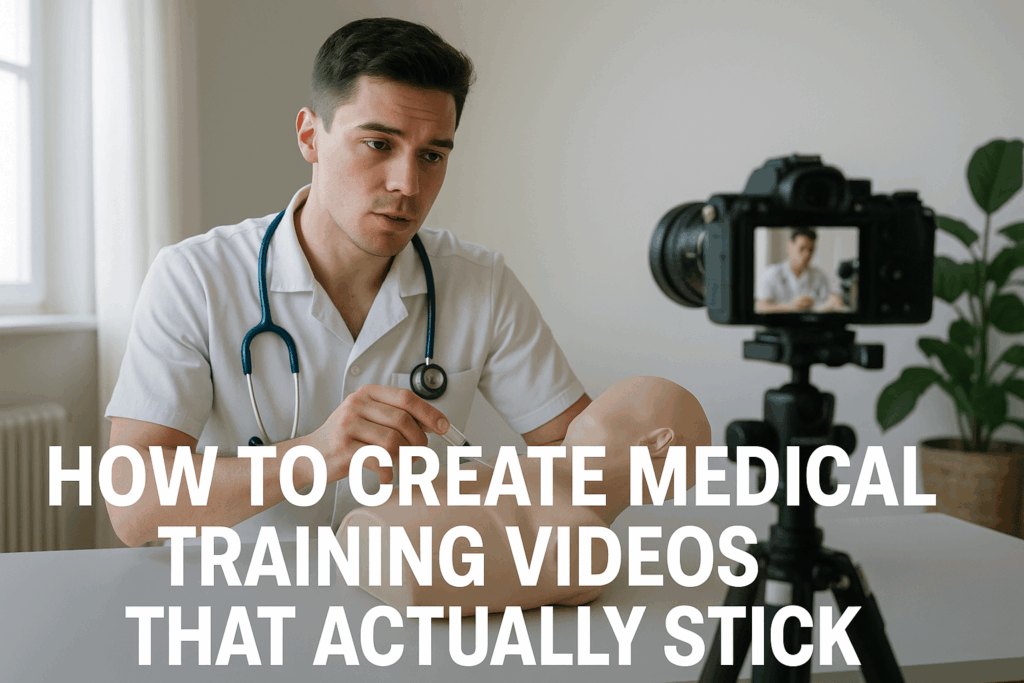
What the Top Hospitals, Schools, and Health Systems Get Right—And How You Can Too
If your medical training videos look good—but fail to improve staff performance—you’re not alone. Most healthcare organizations rely on outdated training formats or overproduced content that lacks instructional impact. The most effective medical video production doesn’t just explain procedures. They reduce onboarding time, improve patient care, and increase retention among clinicians.
Here’s how to create training videos that drive real learning outcomes and position your organization as a modern leader in healthcare education.
Step 1: Know Exactly Who You’re Talking To
Start by defining your viewer as precisely as possible. The tighter your focus, the stronger your impact.
Ask yourself:
- Are you speaking to experienced RNs, new hires, residents, or med students?
- Do they need a protocol refresher or a full procedural walkthrough?
- What’s their baseline knowledge—and what’s critical to communicate?
Pro Tip: Create audience personas and tailor content to their environment, skill level, and real-world needs.
Step 2: Design for Outcomes, Not Just Information
Most ineffective training videos fail because they dump information without a learning strategy. Effective instructional design for medical videos ensures better results:
- Set one clear outcome per video.
- Chunk the process: Break complex tasks into short, digestible modules.
- Use visual-first explanations: Demonstrate procedures instead of just describing them.
Studies show that outcome-focused, segmented videos increase retention and reduce training time across clinical settings.
FAQ: Optimal Length for Medical Training Videos?
Research consistently shows optimal video length is between 5 to 10 minutes. Break longer topics into standalone pieces for easier updates and faster learning.
Step 3: Make Visuals and Sound Work Harder
High-quality visuals are essential in medical video production, but it’s how you use them that makes the difference.
What top training videos include:
- Animations to simplify multi-step processes and concepts.
- Real-life scenarios to show procedures in action.
- Clean, focused voiceovers that guide without overwhelming.
Use professional narration and light background audio to hold attention without distraction.
Step 4: Build Interactivity Into the Experience
Even small interactive moments drive major gains in engagement and learning. Incorporating these healthcare training video tips can enhance viewer interaction:
Examples:
- End-of-module questions
- Reflection prompts (“What would you do next?”)
- On-screen checklists or step reviews
FAQ: Should Medical Training Videos Include Interactive Elements?
Absolutely. Integrating interactive quizzes and reflection pauses has proven highly effective, boosting engagement significantly.
Step 5: Validate Accuracy and Maintain Compliance
Accuracy isn’t optional. It’s fundamental.
Every piece of content should:
- Be reviewed by licensed professionals
- Align with the latest protocols and compliance standards
- Include clear disclaimers and version control
This protects your brand—and builds trust with your audience.
Final Takeaway: Don’t Just Train—Transform
Great training videos don’t just check a box—they change behavior. When done right, they create confident clinicians, improve patient safety, and reduce operational headaches.
If you’re building or improving your medical training library, focus on clarity, structure, and strategy—not just production value.
Want help producing training videos that meet clinical standards and actually get used? Let’s talk.
